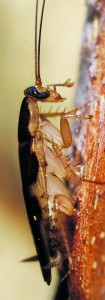MONDAY, 4 JANUARY 2010
Scientists and archaeologists have found that the ancient Nazca civilisation, who lived in the valleys of south Peru 1,500 years ago, caused their own downfall by tampering with the ecosystem that supported them. The team, led by Dr David Beresford-Jones of the McDonald Institute for Archaeological Research at Cambridge, used plant remains and pollen samples to show that the Nazca gradually cleared away the nearby huarango forests to make way for their own crops.The huarango tree was a vital part of the ecosystem, enhancing soil fertility, fixing nitrogen and helping to hold the Nazca’s irrigation channels in place. Together with providing fuel and shelter, this allowed settlers to survive in the otherwise harsh desert environment.
“In time, gradual woodland clearance crossed an ecological threshold,” explains Dr Beresford-Jones. This left the landscape vulnerable to an unusually large El-Niño flood one year, which destroyed all the crops and irrigation channels. Further agriculture was almost impossible and future generations suffered. Had the forest clearance not reached the critical point, the flood would have been far less devastating.
Even now people continue to illegally destroy huarango forests for charcoal. The story of the ancient settlers highlights the importance of ensuring that equally fragile ecosystems are protected. Laura Soul
Breakthrough in leukaemia research
Researchers from the Wellcome Trust and Cancer Research UK Gurdon Institute have discovered that leukaemia has a previously unknown genetic switch. A gene called JAK2 has a nuclear function in the cell, and when it is faulty, as in most leukaemia cases, it can cause cancer.
Leukaemia is a cancer of the blood and bone marrow that occurs when blood cells, usually the immune system’s white blood cells, do not develop properly and divide uncontrollably. It is known to disrupt the body’s immune system, the central nervous system and the production of red blood cells.
Researchers at the Gurdon Institute discovered that faulty JAK2 alters the cell’s messaging system and creates new pathways through which leukaemia can develop. The enzyme encoded by the mutated gene affects histones (proteins that order and regulate DNA) in a way that inappropriately changes which genes are switched on and off.
This discovery is particularly timely since JAK2 inhibitors are currently in clinical trials for the treatment of myeloid leukaemias. As surgery is often not an option with leukaemia, any opportunities for developing intracellular treatments are immensely valuable, making the Cambridge researchers’ discovery highly significant. Taylor Burns
Pesky pests no more!
Jan-henning dirks, Christofer Clemente and Walter Federle from the Department of Zoology have found a new eco-friendly method of repelling insects using a surface coating made of polyimide resin that causes insects to ‘slip’.
Insects are normally able to walk across slippery surfaces with ease by secretion of a fluid (a mixture of oil and water) from tiny pads on their feet. This fluid acts as a ‘glue’ to hold them in place. The new repellent surface turns this secretion into a lubricant. The coating absorbs water from the ‘glue’, leaving behind just the lubricating oily layer.
In lab tests, glass rods were coated with a variety of materials, including non-stick Teflon and the new resin. As cockroaches climbed these rods, researchers measured the frictional force between the surface and the insects’ feet. The new material reduced the friction by about 60 per cent compared with Teflon, causing the cockroaches significant difficulty in climbing the rods.
The new coating could be used to control any insect that relies on the same mechanism for surface adhesion. As the material is both durable and non-toxic, it could have wide-ranging applications, including food containers, clothing and furniture. The next step is commercialisation to allow further development and marketing of this technology. Wendy Mak



